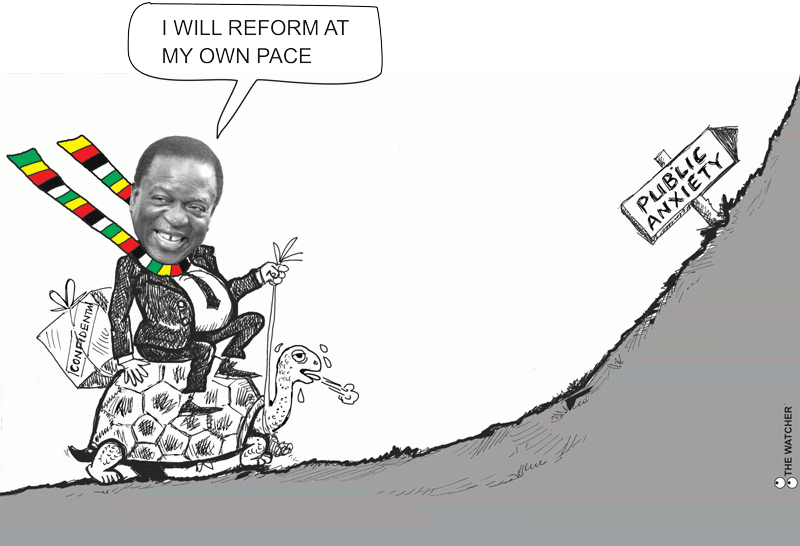
THIS week on Tuesday the Zimbabwe Independent hosted a Zimbabwe 2024 Monetary Policy and Outlook Conference under the theme, “Exploring Growth Strategies for 2024”.
The conference objectives were to engage business leaders, policy makers and the investor community, review the recently announced Monetary Policy Statement (MPS) and map out growth strategies for 2024 and beyond.
In addition, the focus was also to give direction on the policy environment while catalysing collaboration amongst industry players in Zimbabwe.
The discussions were informative as the conference also took a deep-dive into key trends and themes impacting the Zimbabwean economy.
We have compiled different perspectives and recommendations from industry experts, analysts and economists and came up with the following conference resolutions;
There is need for the Government of Zimbabwe to smoothen the business policy environment through minimal interventions and consultations with the private sector. Generally, free economies work better than those based on central authority. This is because decision-making in free markets is a reality-based system guided by individual preferences and sound economic decisions. The major setback is that regulations are top-down commands and not efforts to find common agreement.
Business leaders must rethink their business models and frequently get on-the-ground market feedback given the everchanging environment.
There is wide-spread consensus that a USD environment is not sustainable for an economy such as Zimbabwe. The biggest problem is that a USD cost base makes local businesses uncompetitive. The focus should be on boosting competitiveness and driving exports growth.
- Feature: Zim needs to shift its trade matrix
- AfCFTA: What is in it for Zimbabwean businesses?
- Embrace AfCFTA, Zim firms told
- Old Mutual tech hub trains start-ups
Keep Reading
Business leaders in Zimbabwe realise the need to stabilise the local currency (ZiG) by creating demand for it. The major recommendation here is for national Treasury to support the currency by demanding all levies, rates and taxes (including VAT and PAYE) to be paid fully in local currency (ZiG). Such a move will demonstrate that the issuer (Government of Zimbabwe) has full confidence in its own currency.
One positive attribute about the new structured currency (ZiG) is that there is a defined mechanism for deliberating on the intrinsic value of the currency as opposed to relying solely on confidence in the monetary system. This should bring forth a sense of stability to the currency.
Going forward, effective money supply management is critical. There may be a need to review; (i) the 25% export surrender requirement; and
(ii) statutory reserves.
The willing-buyer willing-seller trading arrangement for foreign currency is an attempt to boost confidence in the economy and should be supported. The idea of transparency and a floating exchange rate has long been requested and if fully implemented could combat the currency volatility.
There is need for more transparency and disclosure on how key fundamental information, such as the Bank Policy Rate of 20% was derived. In addition, delays in the issuance of notes and coins may affect confidence levels in the new currency (ZiG).
There is need for both the public and private sector to deal with some accounting uncertainties that have emerged. For example, is ZiG a functional currency? How will corporates transition from ZWL accounting to ZiG?
Exports promotion remains key for Zimbabwe. While a stable currency (ZiG) is critical for exports growth, it should be complemented by access to capital for local businesses.
Zimbabwe should employ import substitution strategies in order to preserve foreign currency. The industrial sector, which spans manufacturing, construction, and utilities presents opportunities to spur productivity. Through increased local manufacturing, companies in Zimbabwe can identify key products the country can produce to meet burgeoning local demand, produce for global markets, and, where needed, reduce dependence on imports.
The Government of Zimbabwe needs to implement aggressive formalisation strategies. There is indeed clear evidence that the Zimbabwean economy is now largely informal given a proliferation of informal businesses. An assessment of the business environment (taxes, cost of formalisation and regulations) suggests a trend of a growing informal economy.
There is need for more policy measures earmarked at promoting savings and investments in the broader Zimbabwean economy.
More efforts are needed to position Zimbabwe for the AfCFTA. Access to the wider African market through the recently inaugurated African Continental Free Trade Area (AfCFTA) is a major boost for economies. The trade pact presents an important opportunity given that Africa can better leverage its Regional Economic Communities (RECs) to support collaboration across national boundaries that will increase productivity and economic growth through the development of regional and global value chains.
Investors in Zimbabwe should diversify portfolios by exploring USD-denominated alternatives investments and offshore opportunities. Investors should focus on value preservation and target assets such as; (i) International real estate,
(ii) Projects
(renewable energy),
(iii) Things (art and gold) and
(iv) Private equity/structured instruments.
In conclusion, the key take-away from the conference was that the success of ZiG will depend on the broader confidence of economic agents.
The idea of linking a currency to a basket of underlying assets (gold) provides a practical way of determining the intrinsic value of a currency.
- Matsika is a Corporate Finance Specialist with SwitzView Wealth Management. — +263 78 358 4745 or [email protected].











